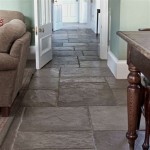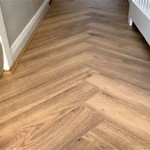Choosing the Right Underlayment for Vinyl Plank Flooring on Concrete
Installing vinyl plank flooring directly on a concrete subfloor can be a successful project, but selecting the correct underlayment is crucial for achieving optimal results. Underlayment serves as a critical intermediary layer, providing benefits that enhance comfort, durability, and the overall lifespan of the vinyl plank flooring. The choice of underlayment depends on several factors, including the condition of the concrete subfloor, the specific type of vinyl plank flooring, and any specific needs regarding moisture resistance, sound insulation, or thermal performance. This article examines the key considerations and options available when selecting underlayment for vinyl plank flooring installed on concrete.
A concrete subfloor, while generally stable, presents unique challenges for flooring installations. Concrete is porous and susceptible to moisture, which can migrate upwards and damage the flooring material and encourage mold or mildew growth. Irregularities in the concrete surface, such as cracks or minor imperfections, can also affect the stability and longevity of the finished floor. Furthermore, concrete offers minimal sound insulation and can be quite cold, particularly in basements or ground-level installations. Therefore, the underlayment must address these potential issues to protect the vinyl plank flooring and ensure a comfortable and lasting installation.
The primary function of underlayment is to create a smooth, level surface for the vinyl planks. It helps to bridge minor imperfections in the concrete, preventing the planks from directly contacting any uneven areas. This creates a more stable base, reducing the risk of plank movement, cracking, or premature wear. Underlayment also acts as a cushion, providing a softer surface underfoot, which translates to greater comfort while walking or standing. In addition to comfort and stability, underlayment enhances the acoustic properties of the floor, reducing noise transmission by absorbing some impact sound. This is especially important in multi-story buildings or homes where noise reduction is desired.
Addressing Moisture Concerns
Moisture is often a primary concern when installing flooring over concrete. Concrete is inherently porous and can wick moisture from the ground through capillary action. Even if the surface of the concrete appears dry, moisture may still be present within the slab. Excess moisture can damage the vinyl plank flooring, leading to warping, cupping, or adhesive failure. It can also create a breeding ground for mold and mildew, which can pose health risks.
Therefore, selecting an underlayment with adequate moisture resistance is paramount. Some underlayments are specifically designed with a built-in moisture barrier, often a plastic film laminated to the underlayment material. This barrier prevents moisture from migrating upwards and damaging the flooring. Independent testing, like ASTM E96, is used to determine the moisture vapor transmission rate to give the consumer a clear understanding of the products performance.
If the concrete subfloor is known to have high moisture levels, it may be necessary to apply a separate moisture barrier before installing the underlayment. Liquid-applied epoxy moisture barriers can effectively seal the concrete surface and prevent moisture transmission. It is crucial to test the concrete for moisture content using a calcium chloride test or a relative humidity test before proceeding with the installation. These tests provide an accurate assessment of the moisture levels and help determine the appropriate course of action.
Even if a moisture barrier is used, the underlayment should still possess some level of moisture resistance. This provides an extra layer of protection in case the moisture barrier is compromised or if moisture levels fluctuate over time. Closed-cell foam underlayments, such as closed-cell polyethylene (PE) or closed-cell polypropylene (PP), offer excellent moisture resistance due to their non-absorbent nature. These materials prevent water from penetrating the underlayment, ensuring that the vinyl plank flooring remains protected.
Providing Sound Insulation
Concrete floors can transmit sound quite easily, making noise reduction a significant consideration, especially in apartments, condominiums, or multi-story homes. Footsteps, furniture movement, and other impact noises can be transmitted through the concrete to the rooms below, causing disturbance. Underlayment can significantly reduce noise transmission by absorbing impact sound and damping vibrations.
The effectiveness of underlayment in reducing noise is measured by its Impact Insulation Class (IIC) rating. The IIC rating indicates the level of impact sound reduction achieved by the flooring assembly. A higher IIC rating indicates better sound insulation performance. For typical residential applications, an IIC rating of 50 or higher is generally recommended. In apartments or condominiums, building codes may require higher IIC ratings to minimize noise transmission between units.
Several types of underlayment are specifically designed for sound insulation. Cork underlayment is a popular choice due to its natural sound-absorbing properties. Cork is a dense, resilient material that effectively dampens vibrations and reduces noise transmission. Foam underlayments with sound-dampening additives are also available. These underlayments often incorporate a layer of dense foam or a specialized polymer that absorbs impact sound. Recycled rubber underlayment is another excellent option for sound insulation. Recycled rubber is a dense, durable material that provides excellent impact sound reduction.
When selecting underlayment for sound insulation, it is essential to consider the specific needs of the installation. If noise reduction is a primary concern, it may be necessary to choose a thicker underlayment with a higher IIC rating. It is also important to ensure that the underlayment is compatible with the vinyl plank flooring and that the installation is performed correctly to maximize its sound insulation performance. Gaps or voids in the underlayment can reduce its effectiveness in absorbing sound. It is important to note that some vinyl plank flooring products may come with attached underlayment that provides the necessary IIC rating. In these cases, no additional underlayment may be required, unless further sound dampening is desired.
Addressing Concrete Imperfections and Providing Comfort
Concrete subfloors are rarely perfectly smooth and level. Minor imperfections, such as small cracks, bumps, or dips, are common. While these imperfections may not be immediately apparent, they can affect the stability and appearance of the vinyl plank flooring. Underlayment helps to bridge these imperfections, creating a smooth, even surface for the flooring. By preventing the vinyl planks from directly contacting the uneven areas, underlayment reduces the risk of plank movement, cracking, or premature wear.
The thickness and density of the underlayment play a crucial role in its ability to bridge imperfections. Thicker underlayments can generally accommodate larger variations in the concrete surface. Denser underlayments provide more support and prevent the vinyl planks from flexing or bending over uneven areas. Foam underlayments are particularly effective at conforming to the contours of the concrete, filling in gaps and creating a smooth, level surface.
In addition to addressing imperfections, underlayment also enhances the comfort of the floor. Concrete is naturally hard and cold, which can make it uncomfortable to walk or stand on for extended periods. Underlayment provides a cushion underfoot, making the floor feel softer and more comfortable. This is especially important in areas where people tend to spend a lot of time, such as kitchens, living rooms, or bedrooms.
The material of the underlayment also affects its comfort level. Foam underlayments, such as polyethylene foam or polyurethane foam, provide a soft, resilient cushion. Cork underlayment also offers a comfortable surface due to its natural resilience. When selecting underlayment for comfort, it is important to consider the thickness and density of the material. Thicker, denser underlayments generally provide a more comfortable surface, although these can impact the overall height of the finished floor. It is important to ensure that any doors or transitions are properly adjusted to accommodate the increased floor height.
Ultimately, selecting the right underlayment for vinyl plank flooring on concrete involves careful consideration of several factors. Moisture resistance, sound insulation, and the ability to address concrete imperfections are all important considerations. By choosing an underlayment that effectively addresses these issues, the homeowner can ensure a long-lasting, comfortable, and aesthetically pleasing floor.

What Type Of Underlay For Vinyl Flooring On Concrete

How To Prepare A Concrete Floor For Vinyl Flooring Parrys

Choosing Underlayment For Vinyl Plank Flooring Your Ultimate Guide Jona Panel S Inc

Lvp Flooring Installation Over Concrete Subfloor Full Instructional Builds By Maz Flooret

Do I Need Underlayment For Vinyl Plank Flooring

Underlayment For Vinyl Plank Flooring Introducing Soundbuffer

Do I Need An Underlayment For Vinyl Flooring Lx Hausys

Importance Of Underlayment For Laminate Flooring On Concrete

What Is The Best Underlay For Vinyl Lvt Flooring Fix

How To Prep Wood Subfloor For Luxury Vinyl Plank Flooring Beginners Fix High And Low Spots
Related Posts








